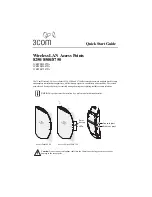
INS_RL1000GW_REV– 15 Jul 2016 PAGE 116
INSTALLATION AND OPERATION MANUAL
RL1000GW
TECH SUPPORT: 1.888.678.9427
Service Buffer Mode
The service buffer-mode is set at the terminal server settings and defines the buffer operational
mode for all the services.
Byte mode
A byte is structured as [start-bit, data-bits, parity-bit, stop-bits] whereas the number of data-bits
may be 5 to 8.
At this mode, the serial-processor collects bytes and encapsulates the data at a UDP/TCP Ethernet
frame.
The number of bytes collected to a single Ethernet packet is determined by the following factors:
»
Allowed latency.
»
Bus idle time.
Frame mode
A frame is a group of bytes sent by the customer equipment (CE) as complete message.
When using frame mode, the serial-processor will use the bus-idle-time to distinguish between
frames. Each frame will be encapsulated as an individual UDP/TCP packet.
Service Connection Mode
The service connection-mode is set at the terminal server settings and defines the protocol option
to be used for all services.
UDP
Serial data will be encapsulated as UDP/IP frames.
Since UDP is connectionless it is required by the user to configure the IP address of the UDP client
as the destination. This is done at the ‘terminal-serer’ ‘udp-service’ cli hierarchy.
NOTE: UDP mode is not supported at current software version.
TCP
Serial data will be encapsulated as TCP/IP frames.
This mode allows higher availability for the end to end connection and traffic validation.
TCP connection will be established between the RLGE2FE16R router acting as a terminal server
and the tcp client. The tcp client must initiate the connection so at this case there is no need to
configure in advance the ip address of the client (unlike at UDP).
Service Port number
The TCP/UDP port number used at a terminal server service is defined explicitly at the user
















































